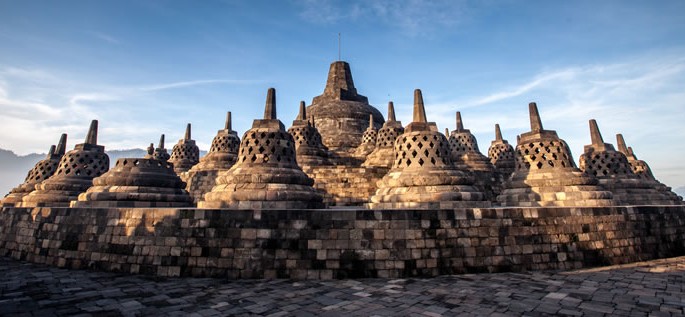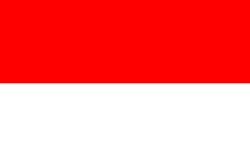Post by 222 on Mar 12, 2017 14:30:02 GMT


1./ Indonesia has the largest number of "Austronesian" speakers in the world.
The three (3) major "Austronesian" nations (above 50 million speakers): Indonesia, Phlippines, and Malaysia
Not talking about the national / official language of the country, Bahasa Indonesia, spoken by over 250 million people there, the regional languages of Indonesia - "Malayo Archipelago" itself make the large number of Austronesian speaker in the world.
By the recent genetic study and findings supported by the academias and scientists, and are often published by the "Austronesian" members in EastBound88.com , ... the region of Malay Archipelago or "SouthEast Asian maritime" itself is largely influenced by the "non-Austronesian" in genetic, culture and language who are more dominant in South East Asia mainland or Indo Chine peninsular, mainly "Austro-Asiatic" or "Mon-Khmer" language family.
Malay peninsula has sizeable of Austro-Asiatic speakers "aboriginal" in the land compared to Indonesia and Philippines,
2./ Indonesia is also the largest country in ASEAN (Association of South East Asian Nations) / "South East Asia", and the largest archipelago nation in the world.
The next is Japan and Philippines as the 2nd and 3rd largest archipelago nations in the world.
=== ***** ===
Austronesian Language Family
aboutworldlanguages.com/austronesian-language-family
Updated November 4, 2016 by Irene Thompson
The Austronesian language family stretches halfway around the world, covering a wide geographic area from Madagascar to Easter Island, and from Taiwan and Hawai’i to New Zealand. The family includes most of the languages spoken on the islands of the Pacific with the exception of the indigenous Papuan and Australian languages. The name “Austronesian” comes from the Greek words for ‘south’ and ‘island.’ Austronesia includes Madagascar, Indonesia, the Philippines, Taiwan and the Pacific islands of Melanesia, Micronesia and Polynesia. With 1268 languages, Austronesian is one of the largest and the most geographically far spread language families of the world.
Austronesian languages are spoken in Brunei, Cambodia, Chile, China, Cook Islands, East Timor, Fiji, French Polynesia, Guam, Indonesia, Kiribati, Madagascar, Malaysia, Marshall Islands, Mayotte, Micronesia, Myanmar, Nauru, New Caledonia, New Zealand, Niue, Northern Mariana Islands, Palau, Papua New Guinea, Philippines, Samoa, Solomon Islands, Suriname, Taiwan, Thailand, Tokelau, Tonga, Tuvalu, USA, Vanuatu, Viet Nam, Wallis and Futuna. The total number of speakers of Austronesian languages is estimated at 311,740,132 with a median of 3,384 speakers per language (Ethnologue).
The existence of the Austronesian language family was first discovered in the 17th century when Polynesian words were compared to words in Malay.
Despite extensive research into Austronesian languages, their origin and early history remain a matter of debate.
Some scholars propose that the ancestral "Proto-Austronesian" language originated in Taiwan (Formosa), while other linguists believe that it originated in the islands of Indonesia.
The Austronesian language family is usually divided into two branches: Malayo-Polynesian and Formosan.
The Malayo-Polynesian branch is by far the largest of the two. It is traditionally divided into two main sub-branches:
-) The Western sub-branch includes 531 languages spoken in Madagascar, Malaysia, Indonesia, the Philippines, parts of Taiwan, Thailand, Vietnam, and Cambodia. Two languages of Micronesia (Chamorro and Palauan) are also included in this group. This branch represents over 300 million speakers and includes such widely spoken languages as Javanese, Malay, and Tagalog.
-) The Central-Eastern sub-branch, sometimes referred to as Oceanic, contains around 706 languages spoken in most of New Guinea, and throughout the 10,000 or more islands of Melanesia, Micronesia, and Polynesia. Despite its diversity and geographic spread, this branch represents only under 2 million speakers.
The aboriginal languages of Australia and the Papuan languages of New Guinea are not included in this branch.
Conclusion:
==== The Austronesian basic classifications / taxonomy ====
1. Malayo-Polynesian - largest
A. Western Malay-Polynesian
B. Central-Eastern Malayo-Polynesian (Oceanic)
2. Formosan - most diversed Austronesian group?
==== The further classification: ====
"Austronesian" language family
. Proto-Austronesian language
1. Formosan languages, e.g. Amis, Atayal, Paiwan, Puyuma, Thao, Yami, etc
2. Malayo-Polynesian languages
. Proto-Malayo-Polynesian language
A. Nuclear Malayo-Polynesian languages
I. Sunda-Sulawesi languages, e.g. Acehnese, Balinese, Bataknese, Cia-Cia (now using Korean HanGeul from previous Gundhul, a Jawi scripts derived Arabic writing system), Champa, Javanese, Malay, Moken, Sundanese, Tetum (Timor Leste), Tsat (Hui Hui - Muslim), etc
II. Borneo-Filipino languages, e.g. Dayak Benuaq, Filipino, Malagasyan, Minahasan (Manado) - Northern Celebes, etc
B. Oceanic languages, e.g. Fijian, Hawaiian, Maori, Samoan, Rapa Nui (Easter Islanders), etc
3. Trans New Guinea languages, e.g. Fataluku *
4. West Papuan languages, e.g. Ternate, Tidore (Halmahera Sultanate, Central-Eastern Indonesia) **
Foot Note
* The Trans New Guinean languages are separately from Austronesian language family, but tend to have strong Austronesian influences.
** The West Papuan languages are a Papuan language family (Melanesian), that are neither Austronesian nor Australian Aboriginal languages, but somewhere between of the two.










.jpg/280px-Garuda_Pancasila_Poster_(color).jpg)
 - 250 million
- 250 million - 100 million
- 100 million








